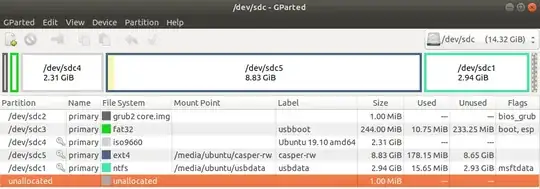After considerable review of the options, I tried and failed to create a usable live Ubuntu USB with persistent storage using what seemed like "best practice" instructions at https://www.howtogeek.com/howto/14912/create-a-persistent-bootable-ubuntu-usb-flash-drive/ I suspect I'm one step away from a full solution, but I need help.
I reviewed answers on AskUbuntu and other places before starting, including many responses by @C.S.Cameron and @sudodus. Answers for OS versions earlier than 18.04 are now of uncertain value for running 18.04 or later due to various issues. Hence I opted to follow the comprehensive and recent instructions at the URL above.
After following the instructions, I seem to have a USB drive formatted by mkusb as predicted. When I attempt to boot, the BIOS/UEFI process identifies the USB stick as a possible boot location, but when I select it for booting and proceed, I am returned to the same screen for choosing a boot location. For some reason, the USB stick is rejected as a viable boot option. I have tried the process 3-4 times using 2 iso images (18.04LTS and 19.10) and 2 USB sticks (Sandisk Extreme 64GB and Sandisk Cruzer Facet 16GB). Below are links to two screenshots of GParted analysis of the resulting USB sticks.

